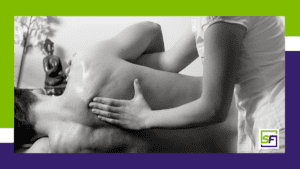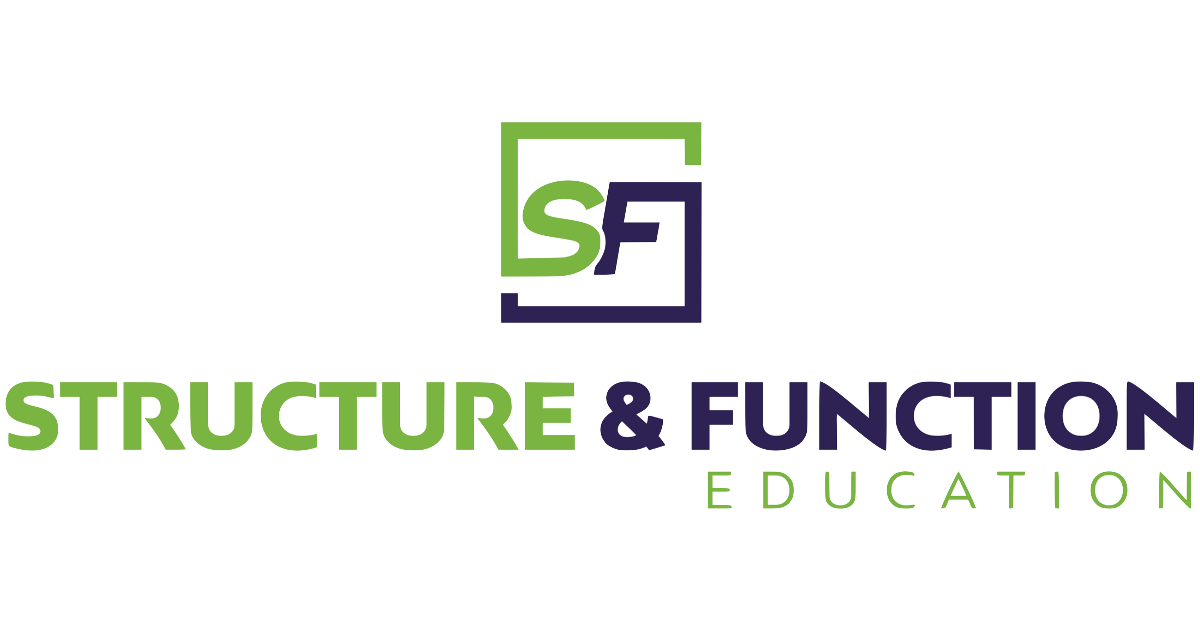
Evaluating Alternative Therapeutic Techniques for Managing Pain
Who is this course for?
In the days of Evidence Based Practice (EBP), many practitioners battle with the balance of the EBP model, evaluating evidence, combining it with clinical decision making, and their patient’s values. The focus solely on systematic reviews and only the scientific merit has skewed what Evidence Based Practice was originally planned to be. This course allows a review of EBP and then reflects its application and utility by walking through several alternative medical techniques and the many questions relative to their evidence. This course causes practitioners to deal with the grey of Evidence Based Practice, and also consider the merits of the techniques relative to their evidence.
This course will provide practitioners with a framing of the evidence and allows them to fill any gaps. This course provides practitioners with a framework that allows them to digest RCT’s and Systematic Reviews with a critical eye to what they are telling us about these alternative pain management techniques. And lastly, provide practitioners with the evidence to make informed decisions relative to selecting these techniques in practice.
As a therapist…
Do you focus on Evidence Based Practice (EBP)? We must seek out the evidence behind our techniques so that we can manage our patients’ pain. I have heard so many people arguing against various techniques because it has a lack of evidence suggesting efficacy. We have created this focus solely on the evidence mindset where some people think you can’t do anything unless it has strong evidence suggesting it is effective. This approach is challenging and ultimately unrealistic given where our literature is.
We need to evaluate the evidence in critical ways. Understanding the strengths and limitations of the literature we are reading. We spend far too much time doing systematic reviews that fail to give a complete picture of the evidence. This course will provide a framework to work through this issue and see the issues we have in our pain management literature.
Are you dealing with patients who experience pain?
Often, as practitioners, we are frustrated with dealing with acute and chronic pain. If we want to apply Evidence Based Principles to the care of these patients it can be problematic. In order to make informed decisions, we must understand the totality of the literature and evaluate it critically.
Are you trying to see what non-pharmaceutical options are best for treating your patients’ pain? If so this course will provide you with the evidence as it works through many options and presents the evidence for each.
Do you want to learn ways to improve your use of EBP principles when treating pain?
- Understand the differences between the art and science in clinical practice.
- Understand what Evidence Based Practice (EBP) is and is not.
- Understand the evidence from Case Studies, Randomized Control Trials, and Systematic Reviews of Myofascial Techniques, Cupping, Dry Needling, and Instrument Assisted Techniques.
Learn about…
- What the Case Studies, Randomized Control Trials (RCT), and Systematic Reviews demonstrate relative to Myofascial Techniques, Cupping, Dry Needling, and Instrument Assisted Techniques effects on pain.
- How Bias is reflected/evaluated in systematic reviews
- Why are scientists so skeptical of the effects seen in the RCT’s
This course is for you if you are you looking to…
Get a better understanding of Evidence Based Practice (EBP) and its application to pain management, Module 2 shows you how.
Better understand the literature relative to vacuum cuppings effects on pain, Module 3 shows you how.
Better understand the literature relative to Myofascial techniques and their effects on pain, Module 4 shows you how.
Better understand the literature relative to Instrument Assisted Soft Tissue Mobilization and its effects on pain, Module 5 shows you how.
Better understand the literature relative to Dry Needling and its effects on pain, Module 6 shows you how.
Your instructors Brian will discuss…
- Pain theory and pain management.
- Evidence Based Practice and its applicability/difficulty relative to the pain literature
- Differences between art and science in clinical practice within the EBP paradigm
- The literature relative to 4 techniques (Myofascial Techniques, Cupping, Dry Needling, and Instrument Assisted Techniques) and their effects on pain
Do you need CEU credits but can’t find the time to go to a class
Let online education help you out!
Learn at your own pace, in your ideal environment!
You’re a busy professional. You need to balance your career, home life and find time to continue your education.
As long as you have Internet access you can access the course from anywhere.
Advance your career in areas of focused study, geared towards your personal learning goals.
Becoming an expert takes time. It takes continuous study and practice. When you gain knowledge you are advancing your professional career. Online learning gives you the opportunity to focus on the skills you need.
Topics that you enjoy.
Select topics that interest you. Topics that you find fascinating. Online distance learning allows you to find topics that might not be available locally.
Learn at your own pace.
Everyone has their own rhythm. Some people only need to hear a lecture once and take perfect notes, while others might need to listen more than once. Online learning gives you the option to repeat a lecture for maximum affect.
Are there Continuing Education Units (CEU)?
Athletic Trainers:
Structure and Function Education (BOC AP# P10069) is approved by the Board of Certification, Inc. to provide continuing education to Athletic Trainers. This program is approved for a maximum of 1.0 Category A CEUs and 3.0 EBP credits. ATs should claim only those hours actually spent in the educational program.
Physical Therapists:
Texas Physical Therapy Association has approved this course for 4 CEUs.
Chiropractors:
Structure and Function Education is a PACE Recognized Provider. This course is designated for 4.0 Continuing Education Units.
PACE is a division of the Federation of Chiropractic Licensing Boards, and serves Alabama, Alaska, Arizona, Connecticut, District of Columbia, Georgia, Idaho, Indiana, Iowa, Kansas, Louisiana, Maine, Maryland, Massachusetts, Minnesota, Montana, Nebraska, Nevada, New Jersey, New Mexico, North Carolina, North Dakota, Oklahoma, Ohio, Oregon, Rhode Island, South Carolina, South Dakota, Tennessee, Texas, Utah, Vermont, Virginia, Washington and Wyoming.
Full Course description
What will you learn as a student in this Course?
- The 4 different sources of pain
- Theories of pain
- How to evaluate the randomized control trials and systematic reviews for Cupping therapy and its impact on pain
- How to evaluate the randomized control trials and systematic reviews for Myofascial techniques therapy and its impact on pain
- How to evaluate the randomized control trials and systematic reviews for Instrument Assisted soft tissue therapy and its impact on pain
- How to evaluate the randomized control trials and systematic reviews for Dry Needling therapy and its impact on pain
- Synthesize the information as a whole and reflect it upon evidence-based practice relative to these modalities
- How to frame these results relative to traditional pain management techniques and their evidence from Cochrane reviews and their efficacy for pain management
What’s included in this course?
- 6 lessons including, 1 hour of video
- A complete downloadable transcript for you to follow along.
- 8 article readings
- Course completion quiz
Reading materials
All reading materials are downloaded through PubMed free PMC.
- Fillingim RB. Individual differences in pain: understanding the mosaic that makes pain personal. Pain. 2017;158 Suppl 1(Suppl 1):S11–S18. doi:10.1097/j.pain.0000000000000775
- Saunders J. The practice of clinical medicine as an art and as a science. West J Med. 2001;174(2):137–141.
- Sackett DL, Rosenberg WM, Gray JA, Haynes RB, Richardson WS. Evidence based medicine: what it is and what it isn’t. BMJ. 1996;312(7023):71–72. doi:10.1136/bmj.312.7023.71
- Satterfield JM, Spring B, Brownson RC, et al. Toward a transdisciplinary model of evidence-based practice. Milbank Q. 2009;87(2):368–390. doi:10.1111/j.1468-0009.2009.00561.x
- Kim S, Lee SH, Kim MR, et al. Is cupping therapy effective in patients with neck pain? A systematic review and meta-analysis. BMJ Open. 2018;8(11):e021070. Published 2018 Nov 5. doi:10.1136/bmjopen-2017-021070
- Moura CC, Chaves ÉCL, Cardoso ACLR, Nogueira DA, Corrêa HP, Chianca TCM. Cupping therapy and chronic back pain: systematic review and meta-analysis. Rev Lat Am Enfermagem. 2018;26:e3094. Published 2018 Nov 14. doi:10.1590/1518-8345.2888.3094
- Gauns SV, Gurudut PV. A randomized controlled trial to study the effect of gross myofascial release on mechanical neck pain referred to upper limb. Int J Health Sci (Qassim). 2018;12(5):51–59.
- Cheatham SW, Lee M, Cain M, Baker R. The efficacy of instrument-assisted soft tissue mobilization: a systematic review. J Can Chiropr Assoc. 2016;60(3):200–211.
- Boyles R, Fowler R, Ramsey D, Burrows E. Effectiveness of trigger point dry needling for multiple body regions: a systematic review. J Man Manip Ther. 2015;23(5):276–293. doi:10.1179/2042618615Y.0000000014
Register Now for this course
Meet Your Instructor(s)
Pricing Information
Monthly Subscription
$ 19.99 Monthly- Total cost $240 per year.
- 3-day free trial!
- Monthly membership.
- Cancel any time!
- Access to all online classes!
- Access to class discussions.
- Access to the subscriber only community.
- Live Q&A sessions with Sue, Brian and other S&F Education instructors.
Yearly Subscription
$ 199.00 Annually- Save $40 over the monthly cost
- 3-day free trial!
- Yearly membership.
- Cancel any time!
- Access to all online classes!
- Access to class discussions.
- Access to the subscriber only community.
- Live Q&A sessions with Sue, Brian and other S&F Education instructors.
Satisfaction Guarantee
If you aren’t satisfied with the course within the first 30 days after your first payment but before you have taken the final exam, you can get a refund. We’ll cancel the course immediately upon your refund request and issue the refund to your credit card though our processor Stripe.
Frequently Asked Questions
How is the course delivered?
The course is a series of video lectures and readings. The student is allowed to proceed at their own pace. The is an exam at then end that the student needs to pass.
How soon can I use the techniques learned in my practice?
You can use it immediately after passing the exam.
How long do I have access to the course?
One time purchases of the course will have full access to the course for 12 months starting on the date of purchase. Membership Subscribers have access until the end of the current subscription period.
P.S
If you want to help with incorporating evidence based ways to manage pain then this course is for you.
Learn why Evidence Based Practice models matter

This course will provide practitioners with a framing of the evidence and allows them to fill any gaps. Learn a framework to digest RCT’s and Systematic Reviews with a critical eye and discover what they are telling us about these alternative pain management techniques.
Course Provider: Organization
Course Provider Name: Structure & Function Education
Course Provider URL: https://structureandfunction.net/online-courses/evidence-based-practice/
Course Mode: Online
Course Workload: PT4H
Duration: PT4H
Repeat Count: 1
Repeat Frequency: Daily
Course Type: Paid
Course Currency: USD
5


